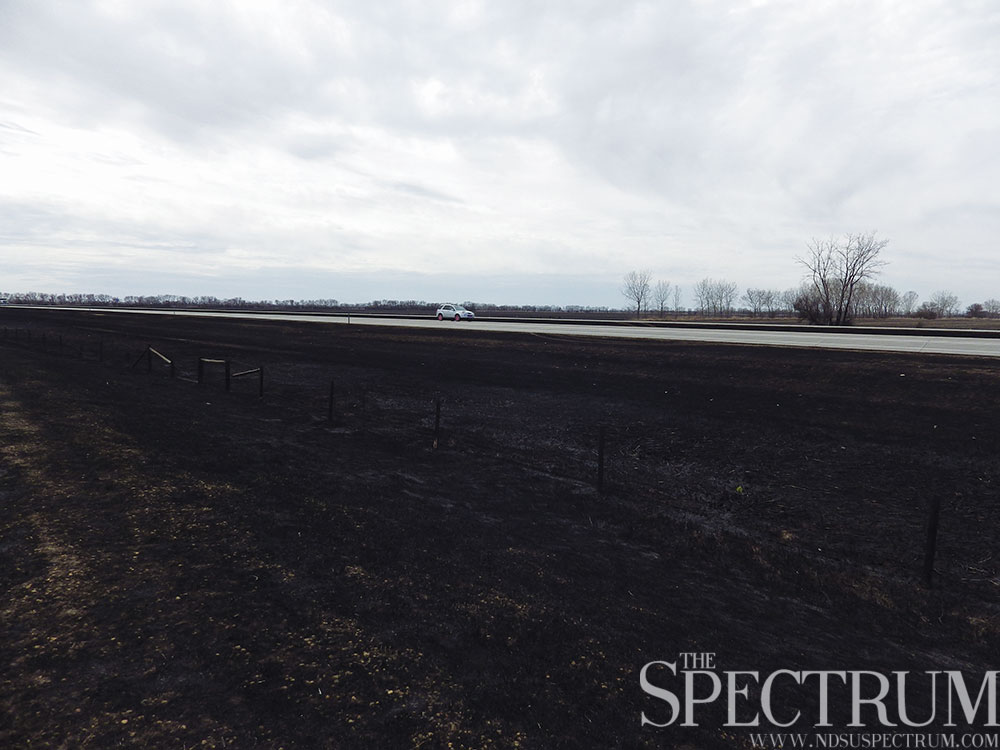
Grassfires ignited by dry conditions burned stretches of Interstate 29 between Grand Forks and Canada in April 2015.
April showers are not so plentiful in North Dakota, where the month is one of the driest.
Averaging 1.36 inches of rainfall, April is noticeable drier than May, whose average rainfall is near 3 inches. The North Dakota Agricultural Weather Network said, “As has been the case for the past several months, temperatures are expected to remain above average this month.”
April is the sixth driest month in Fargo behind February, January, December, November and March, in that order, assistant state climatologist Daryl Ritchison said. The dryness is attributed to a sun angle that corresponds with August’s sun angle.
Wildfires were common in North Dakota last spring as grass ignited in many sites throughout the state, including ditches along Interstate 29 north of Grand Forks. Those fires prompted the closure of I-29 while fire crews worked to extinguish the blazes. April 2015 was 0.4 inches below average for rainfall.
Wildfires, however, are beneficial to the prairie ecosystem, Ritchison added. So is flooding.
The frequent flooding of the last 20 years and the so-called “wet cycle” have altered the perception of what common spring weather is like, Ritchison said. From a historical perspective, below average rainfall is not unusual for a vernal prairie climate, he said.
In the dynamic prairie climate “typically” is rarely used to describe events of any given month as the climate can change quite radically, Ritchison added.
Last year’s April, the Fargo-Moorhead area recorded 0.96 inches of rain and ranked as the 34th driest on record, Ritchison said. Short distances make monthly rain projections difficult as five miles can mean the difference between no rainfall and an inch of rainfall in a given storm.
The average temperature for the month is 44 degrees Fahrenheit with a normal high of 56 and a normal low of 33.
“That is very close to the averages in Atlanta, Georgia, in January,” Ritchison said. “So what we call spring, others think of as the depths of winter.”
